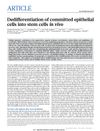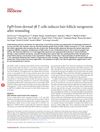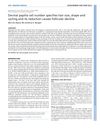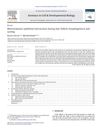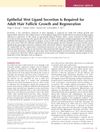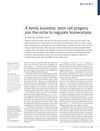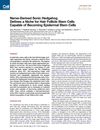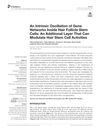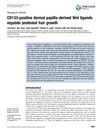Hardwiring Stem Cell Communication Through Tissue Structure
March 2016
in “
Cell
”
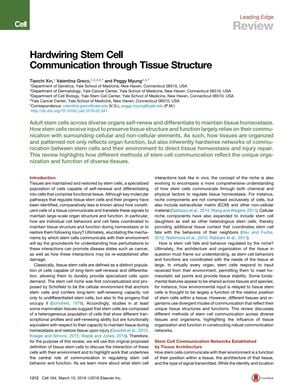
TLDR The conclusion is that tissue structure is key for stem cell communication and maintaining healthy tissues.
The document from March 1, 2016, reviews the communication mechanisms of adult stem cells within their environments, emphasizing the importance of tissue structure and organization in maintaining tissue homeostasis and repair. It explains the concept of the stem cell niche, which includes cellular and non-cellular components like the extracellular matrix, and how the niche's architecture is crucial for stem cell communication. The review uses examples from the Drosophila ovary and vertebrate intestine to illustrate how tissue morphogenesis is coordinated with stem cell specification. It also discusses the oscillating microenvironment of hair follicle stem cells (HFSCs) due to the hair follicle's cyclical regeneration phases and the role of Wnt signaling in coordinating interactions with the dermal papilla and melanocyte stem cells. Hematopoietic stem cells (HSCs) are described as having a fluid tissue architecture, which allows them to migrate and populate various tissues. The document also mentions a study on zebrafish embryos by Tamplin et al. (2015), which suggests a conserved mechanism for HSC colonization across species. It highlights the importance of the niche in determining stem cell fate and the need for further research to understand stem cell communication and harness cell plasticity for tissue regeneration. Additionally, the document discusses the role of mechanical forces and physical properties of the cellular environment in stem cell regulation, including matrix stiffness and mechanical properties transmitted through integrins, lamin-A, and cadherins. It concludes that understanding the mechanics of tissues and cells is crucial for elucidating stem cell communication and maintaining tissue function, but acknowledges that the field of mechanobiology is still developing and requires translation to in vivo and three-dimensional in vitro platforms.


